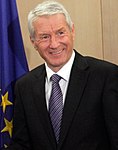Norwegian parliamentary election, 2001
|
|
||||||||||||||||||||||||||||||||||||||||||||||||||||||||||||||||||||||||||||||||||||||||||||||||||||||||||||
|---|---|---|---|---|---|---|---|---|---|---|---|---|---|---|---|---|---|---|---|---|---|---|---|---|---|---|---|---|---|---|---|---|---|---|---|---|---|---|---|---|---|---|---|---|---|---|---|---|---|---|---|---|---|---|---|---|---|---|---|---|---|---|---|---|---|---|---|---|---|---|---|---|---|---|---|---|---|---|---|---|---|---|---|---|---|---|---|---|---|---|---|---|---|---|---|---|---|---|---|---|---|---|---|---|---|---|---|---|
|
||||||||||||||||||||||||||||||||||||||||||||||||||||||||||||||||||||||||||||||||||||||||||||||||||||||||||||
|
|
||||||||||||||||||||||||||||||||||||||||||||||||||||||||||||||||||||||||||||||||||||||||||||||||||||||||||||
|
All 165 seats to the Norwegian Parliament 83 seats were needed for a majority |
||||||||||||||||||||||||||||||||||||||||||||||||||||||||||||||||||||||||||||||||||||||||||||||||||||||||||||
|
||||||||||||||||||||||||||||||||||||||||||||||||||||||||||||||||||||||||||||||||||||||||||||||||||||||||||||
|
||||||||||||||||||||||||||||||||||||||||||||||||||||||||||||||||||||||||||||||||||||||||||||||||||||||||||||
Kjell Magne Bondevik
Christian Democratic
Parliamentary elections were held in Norway on 9 and 10 September 2001. The governing Labour Party lost seats and their vote share was the lowest they had ever obtained in a post-war election. Although they still won a plurality of votes and seats, they were unable to form a government. Instead, a centre-right coalition of the Conservative Party, the Christian People's Party and Liberal Party was formed, led by Prime Minister Kjell Magne Bondevik of the Christian Democratic Party, with confidence and supply support from the Progress Party.
Polls are indicated by share of votes in percentage, or by seats indicated by brackets. The Progress Party saw the most surprising changes in support, having achieved as high as 34.7% in September 2000, and in 2001 almost closing down to 10% at the lowest. The Labour Party and Conservative Party also varied greatly in support in the years before the election.
...
Wikipedia







